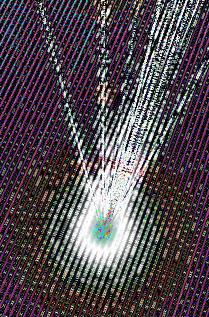Materials tamed for modulator
 The University of Sydney and Harvard University have worked together to create a new device that should improve future electronics.
The University of Sydney and Harvard University have worked together to create a new device that should improve future electronics.
A three-year collaboration between the two universities has led to the development of a new-generation electro-optic modulator that could stamp out its bulky predecessor through the creation of a smaller, stronger, cooler, faster and cost-effective on-chip system.
The new modulator was made possible through the harnessing of a difficult compound – silicon carbide.
Silicon carbide was first recognised as a photonics wonder material more than three decades ago when it was found to display the ‘Pockels effect’ – a light polarising technique used in electrical engineering.
Despite silicon carbide's exceptional durability in demanding electrical, mechanical and radiation environments, its use in photonics has been limited.
But the new developments could advance quantum communications and microwave photonics by facilitating photonic integration; the co-integration with traditional electronics and quantum emitters.
It could open up a new chapter of opportunities in photonics for various applications including quantum computing.
Electro-optic modulators encode electrical signals onto an optical carrier. They are essential for the operation of global communication systems and data centres used in a range of applications and industry settings such as artificial intelligence (AI), broadband networks, and high-performance computing.
Modulators that use the Pockels effect enable low loss, ultrafast and wide-bandwidth data transmission.
Overcoming the previous unworkability of silicon carbide may allow for unique photonic-integrated circuits to transmit and process wideband and fast-speed signals – as well as for emerging quantum technologies.
The researchers also hope that it will help integrate photonics with electronics – potentially paving the way for a new generation of integrated devices used for signal processing, microwave photonics, chip-to-chip, or intra-chip interconnects.
More details are accessible here.







 Print
Print